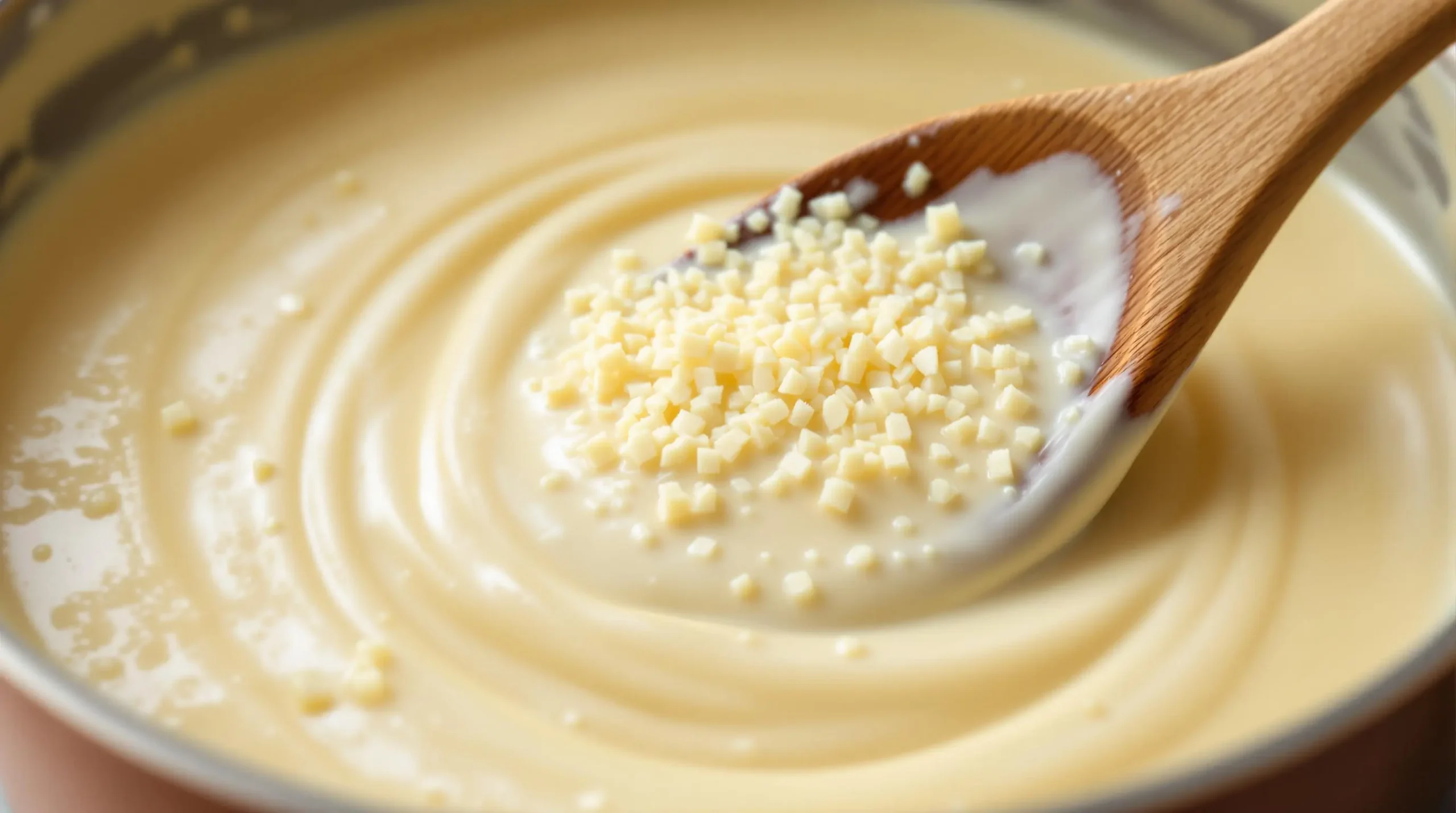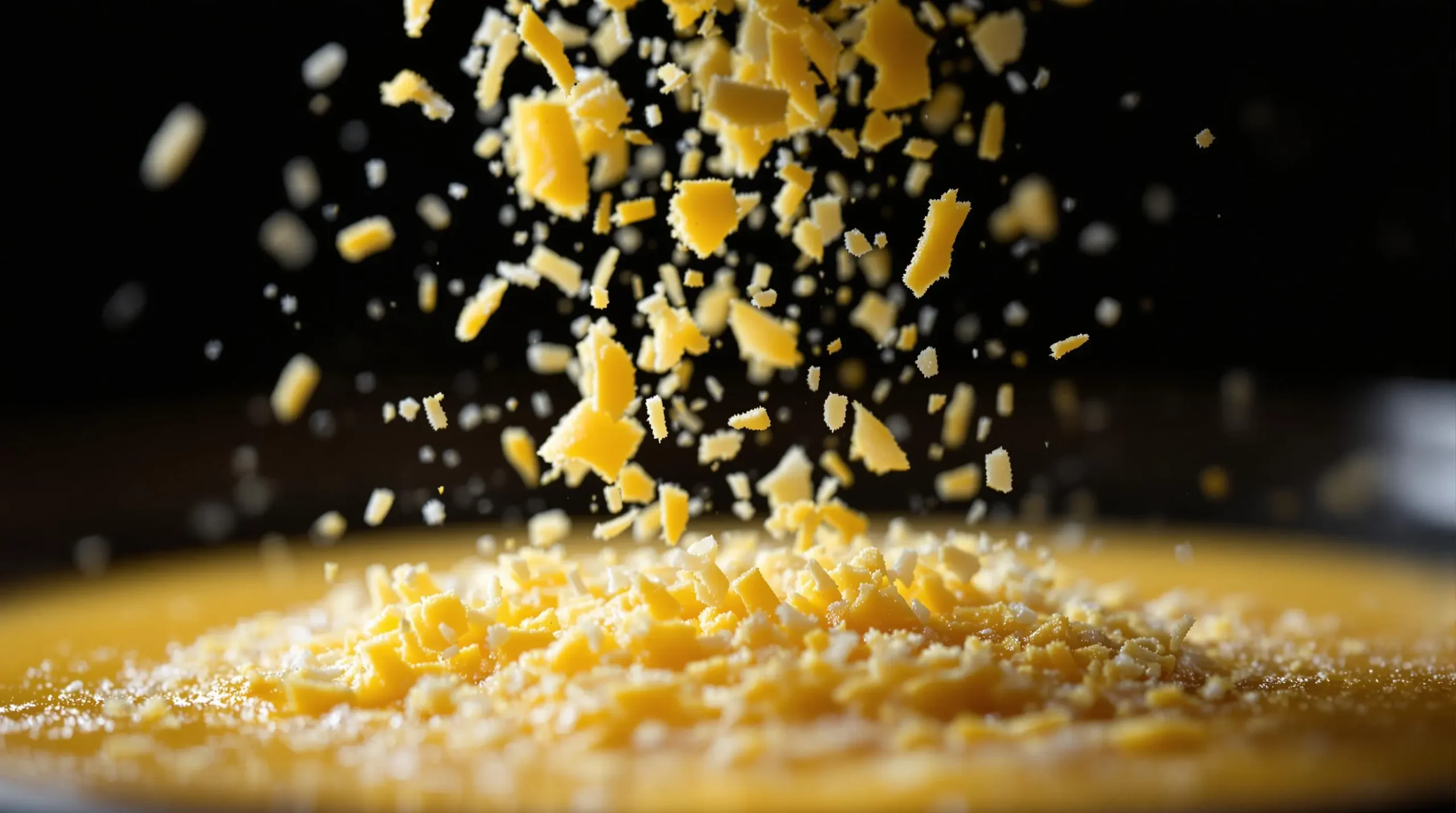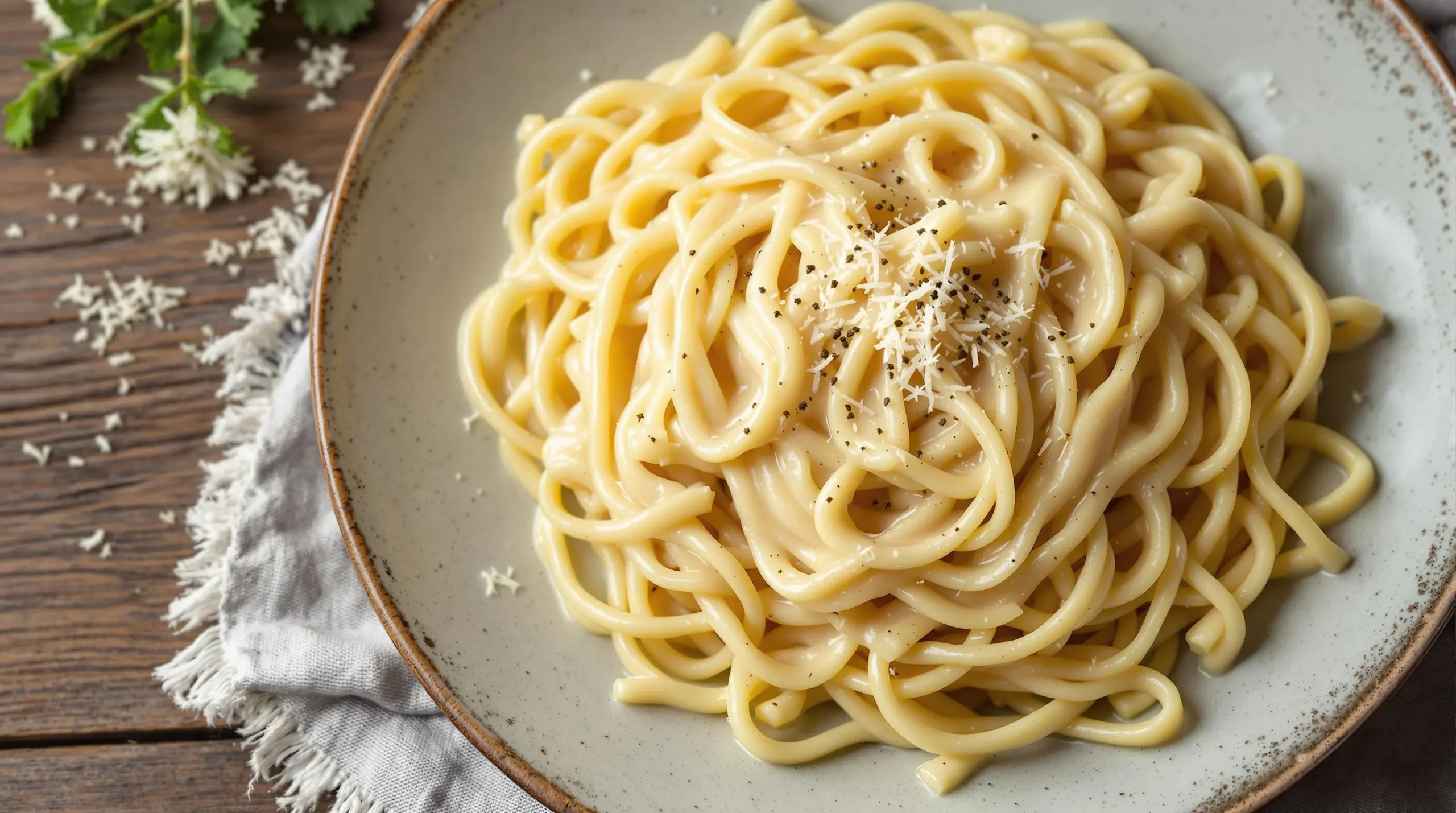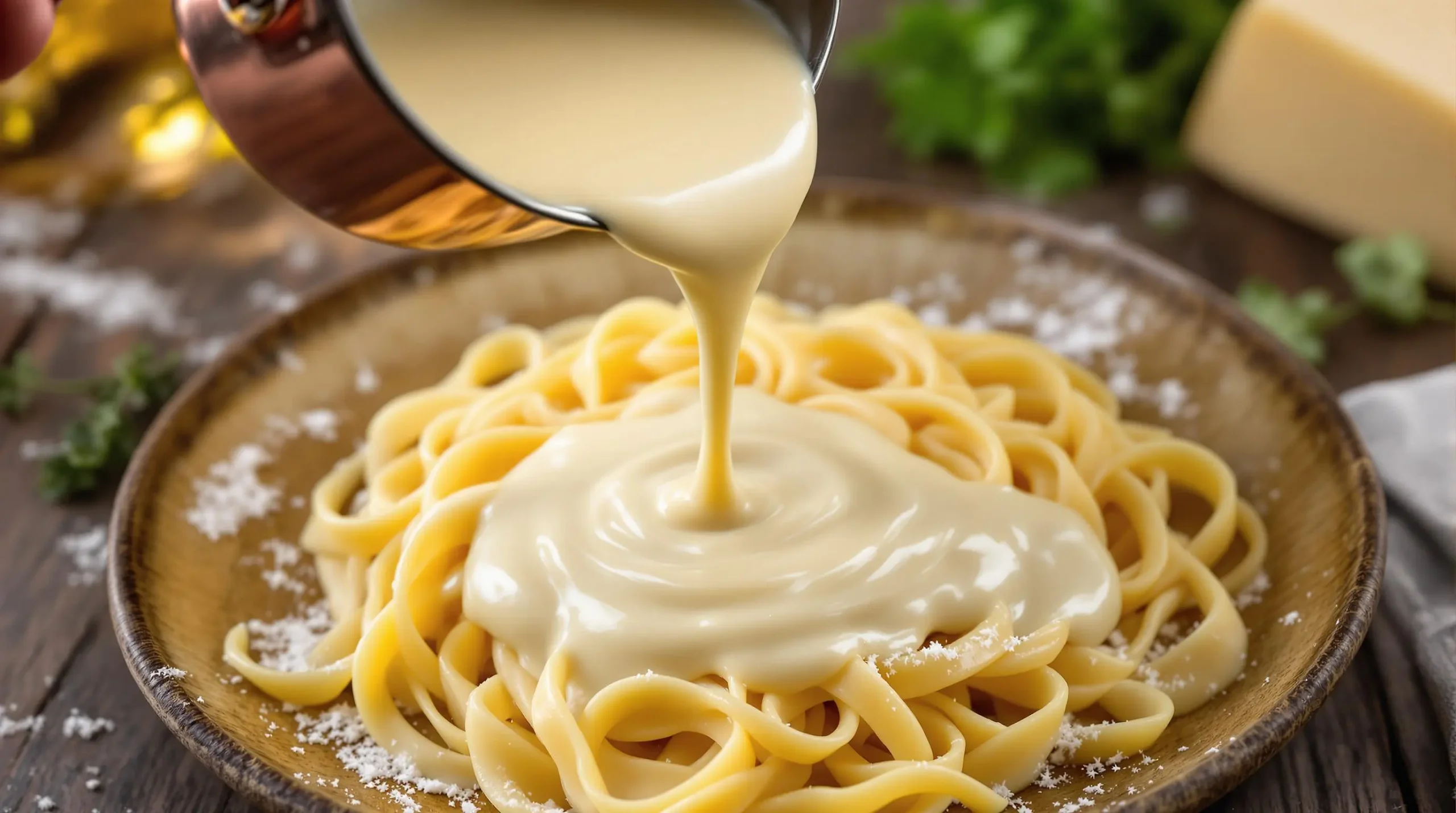The Perfect Parmesan Sauce Recipe
There’s something utterly magical about watching a silky-smooth parmesan sauce come together in your own kitchen. This classic parmesan sauce recipe transforms simple ingredients – butter, flour, milk, and freshly grated Parmigiano-Reggiano – into a luxurious coating that can elevate any dish from ordinary to extraordinary.
What makes this parmesan sauce recipe truly special is its incredible versatility. Whether you’re drizzling it over pasta, using it as a base for your favorite gratin, or serving it alongside steamed vegetables, this sauce delivers restaurant-quality results every time. Best of all, you can prepare it in just 15 minutes with ingredients you likely already have in your pantry.
Throughout this guide, you’ll master essential cooking techniques like creating the perfect roux, achieving ideal sauce consistency, and understanding when to add cheese for the smoothest results. Additionally, you’ll learn valuable tips about selecting the right parmesan cheese and how temperature affects your sauce’s texture.
We’ll walk through everything you need to know: from gathering fresh ingredients and proper equipment setup to mastering the cooking process and exploring creative serving suggestions. Furthermore, you’ll discover helpful storage tips to make the most of any leftover sauce and learn how to reheat it while maintaining its creamy consistency.
Ready to create your own batch of this versatile sauce? Let’s start by gathering our ingredients and setting up our cooking station for success.
Essential Ingredients for Perfect Parmesan Sauce
Creating a flawless parmesan sauce recipe starts with selecting the right ingredients. Let’s explore each component that contributes to this classic sauce’s luxurious texture and rich flavor.
Core Components
The foundation of any exceptional parmesan sauce recipe begins with four key ingredients. First, heavy cream serves as the primary base, creating that signature silky texture. While you can use standard heavy cream, European-style varieties with higher butterfat content offer an even richer result. For the butter component, always choose unsalted varieties to maintain better control over your sauce’s seasoning.
Fresh garlic plays a crucial role in building the sauce’s flavor foundation. While pre-minced options exist, nothing quite matches the aromatic intensity of freshly peeled and minced garlic cloves. Most importantly, the star ingredient – Parmigiano-Reggiano cheese – should be of the highest quality you can find. For best results, always grate your parmesan fresh rather than using pre-grated alternatives.

Secondary Ingredients
To enhance your parmesan sauce recipe further, consider incorporating complementary ingredients. White wine adds complexity and helps cut through the richness – a dry variety like Pinot Grigio or Sauvignon Blanc works beautifully. When it comes to broths, both chicken and vegetable options can serve as excellent flavor enhancers.
For seasonings, start with the basics:
- Fresh ground black pepper
- Sea salt or kosher salt
- Fresh nutmeg (just a pinch)
- Fresh herbs like thyme or sage
Possible Substitutions
Sometimes, you might need to modify the classic recipe. For a lighter version, whole milk can replace heavy cream, though you’ll need to adjust the flour quantity for proper thickening. Additionally, half-and-half offers a middle-ground option that still maintains decent richness.
When it comes to herbs, dried varieties can substitute for fresh ones – just remember to use about one-third of the amount called for in the recipe. For thickening agents, while all-purpose flour remains traditional, alternatives include:
- Cornstarch (for gluten-free options)
- Rice flour
- Arrowroot powder
The key to successful substitutions lies in maintaining proper ratios. Furthermore, regardless of which alternatives you choose, always add them gradually while stirring constantly to prevent lumps from forming.
Remember that each substitution might slightly alter the final texture and taste of your sauce. However, with careful attention to technique and temperature control, you can still achieve excellent results even when working with alternative ingredients.
Before moving on to the cooking process, ensure all your ingredients are measured and ready to go – this mise en place approach will make the actual sauce preparation much smoother and more enjoyable. Additionally, having everything prepared beforehand helps prevent the common pitfall of overheating your sauce while searching for ingredients.
Step-by-Step Preparation Method for Parmesan Sauce Recipe
Creating the perfect parmesan sauce recipe requires attention to detail and proper technique. Let’s break down the process into manageable steps that will help you achieve consistently excellent results.
Initial Preparation
Before diving into the cooking process, proper setup is essential for a smooth parmesan sauce recipe experience. Start by gathering your equipment:
- Heavy-bottomed saucepan
- Wooden spoon or silicone whisk
- Measuring cups and spoons
- Fine grater for cheese
- Heat-resistant rubber spatula
Temperature control plays a vital role in achieving the perfect sauce consistency. Using a heavy-bottomed pan helps distribute heat evenly and prevents scorching. Moreover, keeping your burner on medium-low heat throughout the process ensures better control.
Cooking Process
Begin by melting butter over medium heat until it starts to bubble gently. Next, add minced garlic and sauté for 1-2 minutes until fragrant but not browned. This step creates a flavorful foundation for your sauce.
For the roux, gradually sprinkle flour while whisking constantly. Continue cooking for 2-3 minutes to remove the raw flour taste. Subsequently, slowly pour in your warm cream or milk, whisking continuously to prevent lumps from forming. This technique is crucial for achieving a silky-smooth texture.
As the sauce begins to thicken, maintain steady stirring to prevent sticking. Furthermore, watch for subtle signs that indicate proper consistency – the sauce should coat the back of a spoon and leave a clear path when you run your finger through it.
Finishing Touches
The final stage of your parmesan sauce recipe requires careful attention. First, remove the pan from heat before adding your freshly grated Parmigiano-Reggiano. Then, stir in small portions of cheese, allowing each addition to melt completely before adding more. This method prevents the cheese from clumping or becoming stringy.
For perfect seasoning, taste and adjust with:
- Salt and freshly ground pepper
- A pinch of nutmeg
- Fresh herbs (if using)
If your sauce seems too thick, thin it gradually with warm milk or cream. Conversely, if it’s too thin, simmer gently while stirring until it reaches your desired consistency. Additionally, remember that the sauce will continue to thicken slightly as it cools.
Finally, strain your sauce through a fine-mesh sieve if you prefer an ultra-smooth texture. However, this step is optional and depends on personal preference. Let the sauce rest for 2-3 minutes before serving to allow the flavors to meld together perfectly.
Throughout the cooking process, maintain gentle heat and constant attention – these are the secrets to achieving restaurant-quality results every time. Remember that practice makes perfect, and each time you prepare this sauce, you’ll develop a better feel for the subtle cues that indicate proper consistency and doneness.
Serving and Storage Guide for Parmesan Sauce Recipe
Learning how to properly serve, store, and reheat your parmesan sauce recipe ensures you’ll get the most enjoyment from every batch. Let’s explore the best practices for keeping your sauce delicious from the first taste to the last drop.
Perfect Serving Suggestions
Your homemade parmesan sauce recipe shines when paired with the right companions. For pasta dishes, consider:
- Long noodles like fettuccine or linguine
- Shell-shaped pasta that captures sauce in its curves
- Al dente penne or rigatoni for hearty meals
Beyond pasta, this versatile sauce elevates numerous dishes. Try serving it with:
- Roasted or steamed vegetables
- Homemade pizza as a base sauce
- Baked potatoes or gratins
- Fresh bread for dipping
Additionally, consider using it as a finishing sauce for proteins. The creamy texture complements everything from chicken to seafood, making it perfect for family dinners or elegant entertaining.
Proper Storage Methods
To maintain the quality of your parmesan sauce recipe, proper storage is essential. First, allow the sauce to cool completely at room temperature, but don’t leave it out for more than two hours. Moreover, stir occasionally while cooling to prevent a skin from forming on top.
Choose storage containers wisely:
- Glass containers with tight-fitting lids
- Clean mason jars
- Airtight plastic containers
When refrigerating, follow these guidelines:
- Store within 2 hours of preparation
- Keep at 40°F (4°C) or below
- Use within 3-4 days for best results
- Label containers with dates

Simple Reheating Techniques
Reheating requires gentle handling to maintain the sauce’s smooth texture. Start by removing your sauce from the refrigerator 15-20 minutes before reheating to take the chill off. Subsequently, choose one of these methods:
Stovetop Method:
- Pour sauce into a heavy-bottomed pan
- Heat over medium-low, stirring frequently
- Add warm milk or cream as needed to adjust consistency
Microwave Method:
- Transfer to a microwave-safe container
- Heat in 30-second intervals, stirring between each
- Watch carefully to prevent overheating
Furthermore, never bring the sauce to a boil when reheating, as this can cause separation. Instead, warm it gently until it reaches serving temperature. Additionally, if the sauce seems too thick, gradually whisk in warm milk until you achieve the desired consistency.
Remember that patience is key when reheating – rushing the process can lead to a broken or grainy sauce. By following these storage and reheating guidelines, you’ll ensure your sauce maintains its creamy texture and rich flavor every time you serve it.
Frequently Asked Questions About Parmesan Sauce Recipe
Making the perfect parmesan sauce recipe can sometimes present challenges. Here are answers to the most common questions to help you achieve excellent results every time.
Why did my sauce separate?
Sauce separation usually occurs due to sudden temperature changes or overheating. To prevent this, always remove the pan from heat before adding cheese and maintain gentle, steady warmth throughout cooking. Moreover, add cheese gradually while stirring constantly. If separation occurs, try whisking in a small amount of warm milk while gently reheating the sauce.
Can I make this sauce ahead of time?
Yes! This parmesan sauce recipe works well for make-ahead preparation. First, prepare the sauce following the standard instructions, then let it cool completely. Subsequently, store it in an airtight container in the refrigerator for up to 3-4 days. Furthermore, when reheating, use gentle heat and stir frequently to maintain the smooth texture.
How can I thicken or thin the sauce?
To thicken your sauce, simmer it gently while stirring constantly until it reaches your desired consistency. Additionally, you can create a slurry by mixing equal parts cornstarch and cold milk, then whisking it into the simmering sauce. For thinning, gradually stir in warm milk or cream until you achieve the perfect texture.
Is this the same as Alfredo sauce?
While similar, these sauces have distinct differences. Traditional Alfredo sauce contains only butter, Parmesan, and pasta cooking water. In contrast, this sauce includes a roux base with flour and typically incorporates more ingredients for a more complex flavor profile. Furthermore, the cooking techniques differ slightly between the two recipes.
Why isn’t my cheese melting smoothly?
Smooth cheese melting depends on several factors. First, always use freshly grated cheese rather than pre-grated varieties, as they contain anti-caking agents. Additionally, ensure your sauce isn’t too hot when adding cheese – remove it from heat first. Finally, add the cheese gradually in small portions, allowing each addition to melt completely before adding more.
How can I prevent a grainy texture?
To avoid graininess, maintain gentle heat throughout the cooking process. Moreover, using high-quality, freshly grated Parmigiano-Reggiano makes a significant difference. Additionally, whisk constantly while adding ingredients and avoid boiling the sauce at any point during preparation or reheating.
Final Tips for Mastering Your Parmesan Sauce Recipe
Creating the perfect parmesan sauce recipe becomes easier with practice and attention to key details. Let’s recap the essential elements that contribute to consistently excellent results while exploring ways to make this versatile sauce your own.
First and foremost, remember that temperature control remains crucial throughout the cooking process. Additionally, paying careful attention to ingredient quality – especially using freshly grated Parmigiano-Reggiano – makes a significant difference in your final result. Moreover, maintaining gentle heat and constant stirring helps achieve that coveted silky-smooth texture.
Don’t be afraid to experiment with variations once you’ve mastered the basic technique. For instance, try incorporating different herbs like fresh basil or tarragon to create unique flavor profiles. Furthermore, consider adding roasted garlic instead of fresh for a deeper, more complex taste. The possibilities are truly endless when you understand the fundamental principles of this classic sauce.
Common pitfalls to avoid include:
- Rushing the cooking process
- Using pre-grated cheese
- Adding cheese while the sauce is too hot
- Neglecting to stir consistently
Remember that making an exceptional parmesan sauce takes practice, but the results are worth the effort. Each time you prepare this sauce, you’ll develop a better understanding of how ingredients work together and how small adjustments can enhance the final product.
We’d love to hear about your experiences with this recipe! Consider sharing your favorite combinations and serving suggestions with fellow cooking enthusiasts. Whether you’re drizzling it over pasta, using it as a base for gratins, or creating your own unique applications, this versatile sauce opens up countless possibilities for delicious meals.

Most importantly, enjoy the process of creating something truly special in your kitchen. With these techniques and tips at your disposal, you’re well-equipped to create restaurant-quality parmesan sauce that will impress family and friends alike.

